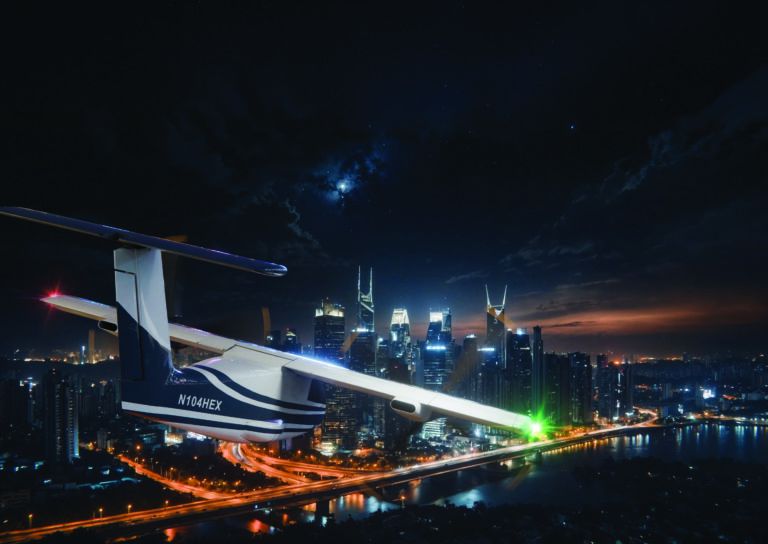Sikorsky has a reputation for helicopter innovation spanning decades, but the company is now targeting a fundamental challenge in the design of vertical take-off and landing aircraft. Igor Cherepinsky, Sikorsky’s innovations director, is leading development of the company’s Rotor Blown Wing technology, which aims to enable VTOL aircraft to exceed the 250kts speed barrier that limits conventional helicopters.
“The idea of a blown wing came to us when we worked on DARPA’s VTOL X-Plane competition in 2018, but for several reasons, we ended up not pursuing phase two of the program, even though we had done most of the work on an aircraft,” Cherepinsky explains. “We answered DARPA’s questions on how to design a hovering machine that can also operate at high speed, beyond the limits of edgewise flight, which is approximately 250kts.
“As a company, we were looking to go faster. So, the question became how do you effectively get on the wing to achieve the higher speeds, and what will the wing look like, and what does the system architecture look like to achieve this?”
The initial solution centered on a tail-sitting aircraft design featuring two helicopter-like rotors that generate sufficient airflow to blow over the wing, aiding the transition from a nose-up attitude to level flight. Customer demands over the past decade for longer-range and larger aircraft within this sector confirmed to Sikorsky that revisiting the initial concept was warranted.
“At the same time we made this decision, we were already working on a hybrid-electric demonstrator, a tilt-wing, which is a tail-sitter design with a fuselage,” Cherepinsky notes. “Although we called it a tilting aircraft, in the true sense, it was not a classic tilt-wing compared to designs of the past.”
Development Origins
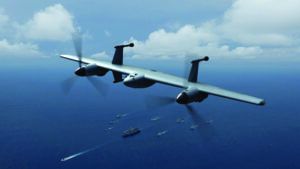
DARPA had continued to see the potential in a delivery capable VTOL platform that needs no specialized tools to be launched, operated, or retrieved. The agency approached nine companies for the project, with the guideline that as long as the requirements are met, the drone can be designed as each OEM best sees fit.
“We had already started flying a 140lb demonstration model that had a wingspan of 10ft, to refine the control laws and make sure we understood the physics of the rotors to blow the wing and transition the aircraft,” Cherepinsky explains. “This class of VTOL vehicle looked as though it would be ideal for military applications, operating near the frontline embedded into the unit, while not requiring the vast infrastructure associated with a runway.”
Such a VTOL operating near the frontline would offer range capabilities and be able to remain on station for hours. If scaled up, it could move cargo and people.
The critical challenge using this flight method is the transition. “It’s getting the wing from a 90° angle of attack to something a lot more reasonable in transition,” Cherepinsky says. “We had to work out the dynamics of the wing and transition without requiring immense amounts of power, which we have accomplished.
“Then there’s a controllability of the flying wing, which has a fairly high aspect ratio. After trials we worked out where and how to resolve any stability issues and any implications that these modifications had to the overall flying performance.”
The blades represent a critical aspect to achieving the dual-mode operation.
“The blades aren’t just designed for edgewise flight, like in a helicopter they are also designed to be propellers,” Cherepinsky says. “It is an optimization of blending the two types of rotor systems in general. The rotor hub and its role in managing this transition are also key points.
“But just demonstrating flight is not enough – it must be useful for its intended purpose. So, we had to reduce the number of mechanical components used in this process to achieve a reasonable payload.”
Test flights of the Rotor Blown Wing concept demonstrated that when the VTOL gets into the air, it is able to flip onto the wing and fly as a fixed-wing aircraft. The concept has been test flown at speeds of up to 99mph (160km/h), with more than 50 take-offs and landings and 40 transitions during development.
Test Phase Complexities
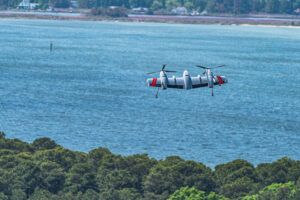
“You’re starting with a wing that’s 90° to the airstream, where you are using rotorwash to blow onto the wings, which is not a new concept, but it’s getting off the rotors and onto the wing and blending the fixed-wing control surfaces with helicopter controls. It comes down to how you can stably flip the aircraft and return to vertical configuration at the end of the flight,” Cherepinsky explains.
Extensive wind tunnel modeling was done before flight testing by the team to reduce risk. Meanwhile Sikorsky faced several other challenges in developing the new concept. Cherepinsky says, “There are the challenges and differences in getting off the wing, but the autonomous flight systems we have developed accommodate this transition.
“Unlike other platforms, which purely accomplish this with their flight controls, we have developed an autonomous system dubbed the motion planner, whereby the aircraft figures out the trajectories needed for a safe transition, within the limits available.
“Autonomy is the complex driver. Tying the motors and power redundant systems into the flight control systems with a motion planning system forms part of the autonomy stack, combined with the mission planning system, so that the aircraft understands what it’s about to fly and works out how to manage its energy, permeates that throughout the process, allowing the platform to self-plan.”
Power Systems Approach
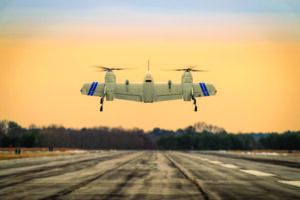
Sikorsky believes hybrid-electric power is best suited for these platforms. “This means smaller battery packs and a smaller turbine, depending on what the role of the platform is,” Cherepinsky says. “We are looking at this capability as a family of systems, so you can have one aircraft design, which can be adapted to a customer’s requirement. They might need a smaller turbine, but a larger battery, or vice versa, depending on how they will operate the aircraft.”
Cherepinsky believes there are several potential applications for the technology and both the commercial and military sectors have expressed interest: “If we look towards firefighting and other areas where persistent VTOL UAS can help, the Rotor Blown Wing is ideal for this. I see these aircraft operating alongside firefighters on a front line, taking off and landing and operating in conjunction firefighting helicopters.”
Scaling up the design would enable passenger flights, although this would require modifications to the design.
“We would have to add a fuselage. We have an idea of what a winged eVTOL will look like, of everything that is needed for passengers and crew on board similarly to winged flight. The same applies to a cargo
configured aircraft.”
US military interest in the Blown Wing has continued from its earliest flight demonstrations. “They have a need for a long endurance, hovering aircraft, which has been a type of unicorn concept until now,” Cherepinsky adds. “I don’t want to claim that this solves all the requirements, but it certainly resolves a big chunk of them, and is a workable VTOL, especially when it comes to getting on and off ships in high-sea states.
“Having an aircraft that can behave like a helicopter, not a quadcopter, that has fixed pitch propellers, helps a great deal in very high-sea states. The military is watching our progress with interest.”
Manufacturing processes
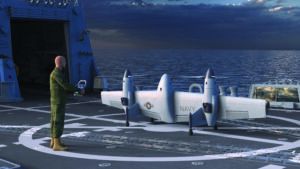
The program extends beyond the development of flight technology. Engineers at Sikorsky are looking at using 3D-printing to produce gearboxes with the same reliability as cast or forged examples. However, the short lead time for the components and the uncertified nature of 3D-printing processes means their use remains a goal for now. The next phase of work involves finishing the model and completing power systems testing.
“We have taken all the inside systems from the developing aircraft and mounted them on two trusses, which we will fly around in a hover,” Cherepinsky says.
“The program’s pace is fast and, if something doesn’t work to plan during the test phase, we won’t lose the nicely completed airframe, which can sit there and wait for six months while conducting the flight tests.”
The technology is set to evolve over the next few years, with the hybrid-electric demonstrator (HEX) combining the Rotor Blown Wing technology with a fuselage. This configuration will be ideally suited for passengers and manned aviation, along with a cargo carrying capacity with a payload of 9,000lb (4,082kg).
Sikorsky intends the HEX to have a take-off weight of around four tons and for it to be powered by a hybrid General Electric engine, with an operating capacity of 1.2MW, or 680kW per engine, powering generators for a pair of rotors mounted in a tilting wing. HEX will have range of around 900km (560 miles).
“The prototype will perform its first hover in 2027, and I believe within ten years we will have a couple of production models in service and certified by the FAA or our military clients,” Cherepinsky says. “There’s an overlap of requirements with these sectors, so we intend to design vehicles that can be used in both.”


